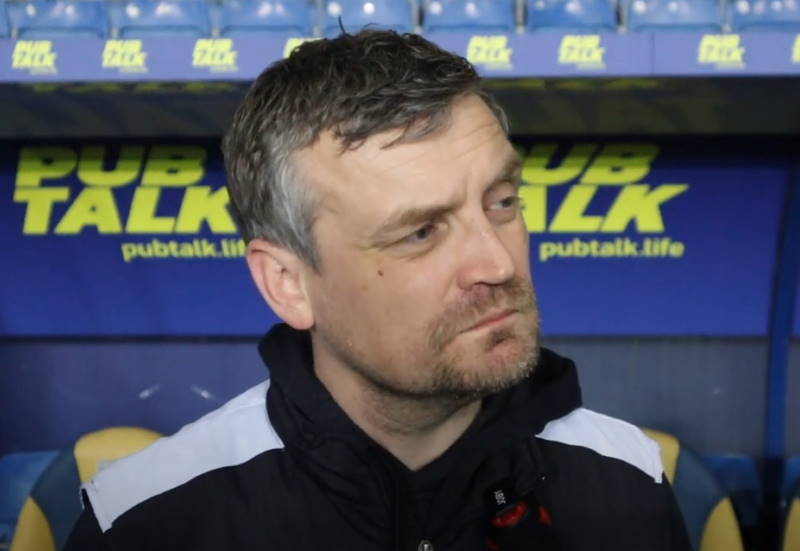
Nagoya Grampus have always appeared something of a mystery to watchers of Japanese football. Boasting a large enough supporter base and often finding themselves packed with talent, the club have always failed to take the next step. Fans of the Orcas have more recently had to content themselves with minor cup victories and a third place finish in the 2008 J-League. However, all that could be about to change; the Aichi club are now in the fast lane, sitting top of the table and looking set to win their maiden J-League title.
Supporters of Nagoya have often asked how it can be that the club have not hit the heights over their long history. Nagoya is the third biggest city in Japan and certainly well equipped to host one of the more successful teams in the J-League. Given the amount of talent, both on the coaching and playing side, that has passed through the club, it is truly baffling as to how, suddenly, now Nagoya have got their act together.
Previous to current coach, and former Grampus legend, Dragan ‘Piksi’ Stojkovic, Nagoya boasted the talented Dutch manager Sef Vergoosen who was poached by Eredivisie giants PSV Eindhoven. Even some 10 years ago, Nagoya had quality in the dugout, as Arsenal manager Arsene Wenger occupied the technical area at the Mizuho Athletic Stadium.
It was under Wenger that Nagoya enjoyed the most successful period in the club’s history, winning the Emperor’s Cup and the J-League Super Cup, also finishing in second place, just three points behind Kashima Antlers. Ironically, it was Stojkovic, now charged with bossing the side, who played a big part in Wenger’s drive for success, as the side’s star player. Whether down to the adept tutelage of the great Wenger, or just an innate coaching ability, the Serbian has transformed Nagoya from a perennial mid-table team into a side able to challenge at the top of Japanese football in what is a very competitive league.
Last season, a less than impressive ninth place was the fruit of Nagoya’s labours. With the club on Asian Champions League duty, and a real lack of depth in the squad, Nagoya were found wanting domestically and their consistency suffered. In the end, a mid-table spot was no great surprise.
This season though has been a different story, with key signings working well with the existing squad, Nagoya have also reaped the benefit of a group within which fitness and confidence are at all all-time high. Australian striker Joshua Kennedy has been the focal point for Nagoya’s charge and the lanky forward occupies top spot in the J-League scoring charts with 14 goals at the time of writing. Add to this the form of Kennedy’s strike partner Keiji Tamada, with his contribution of a handy 10 goals, and suddenly it’s easy to see how the club have been formidable opponents.
In the last campaign defence was a real concern for Nagoya, but this time around, with the addition of arguably Japan’s best defender, Tulio Tanaka, the ship is sailing smoothly. It took Tanaka time to settle down and gel with the squad, particularly off the back of a long spell with Urawa Red Diamonds, but the 29-year-old is now showing his true quality. The Brazil-born World Cup star is also something of a prolific goalscorer for a defender and has already notched six goals in his 18 appearances, a strike rate of one goal every three games.
Truly the pick of the bunch this season, Nagoya’s ability to not just to find the back of the net, but to consistently create the opportunities to do so, has been behind much of the club’s success. Between Nagoya’s top three scorers, Kennedy, Tamada and Tulio, 135 shots have been fired in. Much of this has been due to the steely determination of the Stojkovic’s midfield and the mobility of the coach’s creative players. The ever present Yoshizumi Ogawa has been central to that, along with Japanese international Mu Kanazaki. 21-year-old Kanazaki and the reinvigorated Tamada have caused havoc for J-League defences and supplied Kennedy up front, as part of a 4-3-3 formation, with aplomb.
In many ways, Stojkovic’s adoption of a new formation has been just as much of a revelation as the form of his players. Kennedy plays the target man role perfectly and takes much pressure off Tamada who, although normally a central striker, has looked much more comfortable playing off the Australian international.
Presently Nagoya sit a healthy nine points ahead of annual challengers Kashima Antlers and their football and resolve appears to be strengthening as the finishing line draws closer. Much praise has been heaped upon Stojkovic, in his first coaching job, but in truth his ability should not be too much of a shock. The Serb has been involved in Japanese football since 1994 and the 45-year-old knows what is needed to challenge for the J-League title. He also knows just how competitive the Japanese top flight can be, and how much technical ability is needed to succeed.
Stojkovic will surely keep Nagoya on their toes and, should the club not get ahead of themselves, a maiden J-League title appears a distinct possibility.
Photo Courtesy: Jeff Boyd












